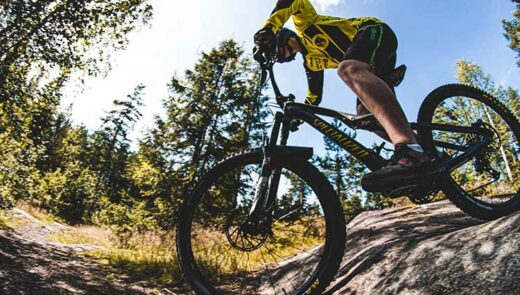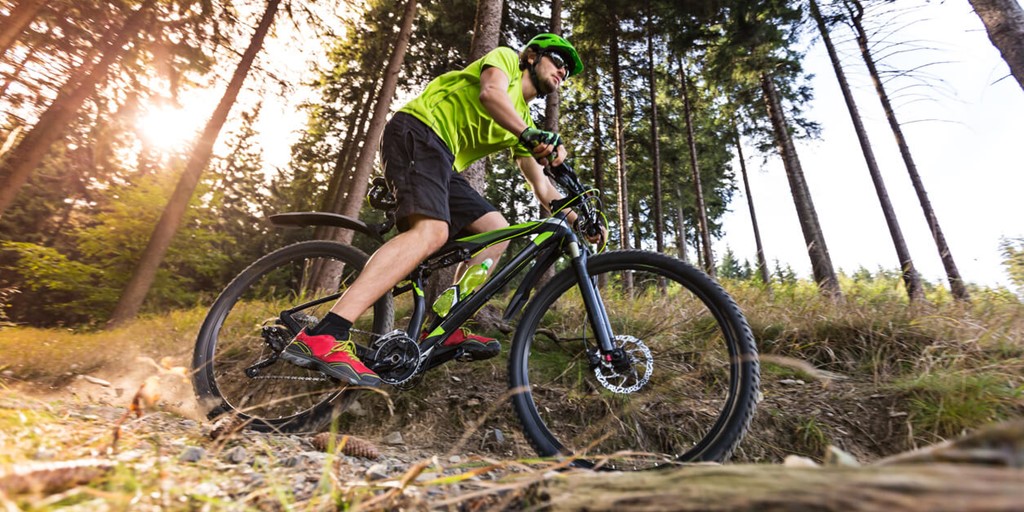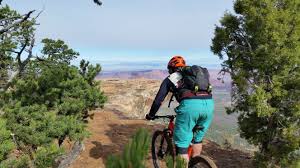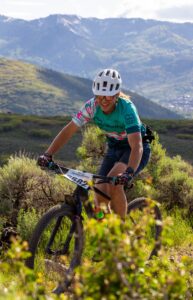You may be a senior mountain biker looking to improve your skills on the trails, from conquering obstacles to perfecting your technique. This blog post will provide you with expert tips and guidance on how to progress from a beginner to an advanced rider. Whether you are looking to boost your confidence on the trails or tackle more challenging terrain, we have got you covered. Let’s probe the vital skills and strategies that will help you level up your mountain biking game and ride with confidence like a pro.
Key Takeaways:
- Consistent practice is key: Senior MTB riders should aim to consistently practice their skills to progress, whether it’s through regular trail rides or skills clinics.
- Focus on fundamentals: Mastering basic skills such as body positioning, cornering, and braking will lay a strong foundation for advancing to more technical aspects of mountain biking.
- Set clear goals: Establish specific and achievable goals for skill progression, whether it’s conquering a certain trail feature or improving speed and control on descents.
- Seek feedback and guidance: Don’t hesitate to seek feedback from more experienced riders or invest in professional coaching to receive personalized tips for improvement.
- Stay patient and persistent: Progressing in mountain biking takes time and dedication, so senior riders should stay patient and persistent in their pursuit of skill development.
To progress from a beginner to an expert level in mountain biking as a senior rider, focus on developing a strong pedal stroke and balance, which are essential for maneuvering the bike and saving energy. Once comfortable on the trail, work on intermediate skills such as cornering, front wheel lift, and technical climbs to improve your ability to navigate sharp turns and obstacles.
Consider taking lessons or coaching sessions to refine your skills and correct any bad habits. Additionally, breaking down a downhill run into different skill sets and gradually building your skills on progression trails can help you improve your overall riding ability13.
Understanding the Basics of Mountain Biking
Getting to Know Your Mountain Bike
The first step to becoming a proficient mountain biker is to get familiar with your bike. Understanding the different components of your mountain bike, such as the suspension, gears, brakes, and tire pressure, is crucial for a safe and enjoyable ride. Make sure to regularly maintain and tune up your bike to ensure optimal performance on the trails.
Fundamental Riding Techniques
To master mountain biking, you must first learn and practice fundamental riding techniques. These include body position, braking, cornering, and shifting. Proper body positioning plays a key role in maintaining balance and stability on varying terrain. Learning how to effectively use your brakes and shift gears will enhance your control and efficiency while riding. Cornering skills are crucial for navigating tight turns with speed and precision. By mastering these fundamental techniques, you’ll be able to tackle more challenging trails with confidence.
Riding a mountain bike requires a combination of skill, technique, and confidence. As you continue to practice and refine your riding abilities, you’ll gradually progress from a beginner to an expert rider. Remember to always prioritize safety and have fun exploring the great outdoors on your mountain bike.
Building Endurance and Strength for Senior MTB Riders
Developing a Targeted Fitness Routine
Building endurance and strength are crucial for senior MTB riders looking to enhance their performance on the trails. To develop a targeted fitness routine, focus on a combination of cardiovascular exercises, resistance training, and flexibility exercises. Incorporate activities such as cycling, hiking, weight lifting, and yoga to improve your overall fitness level and prepare your body for the demands of mountain biking.
Nutrition for Enhanced Performance
Developing a strategic nutrition plan is key to enhancing your performance as a senior MTB rider. Fueling your body with the right balance of carbohydrates, protein, and healthy fats is imperative for sustaining energy levels during long rides and promoting muscle recovery. Hydration is also crucial for maintaining peak performance on the trails, so be sure to drink plenty of water before, during, and after your rides.
Plus, consider incorporating sports drinks or energy gels into your nutrition strategy to replenish electrolytes and provide a quick energy boost during intense rides or races. Working with a sports nutritionist can help you tailor your diet to meet your specific endurance and strength training goals.

Advancing Your Riding Skills
Mastering Challenging Terrain
Riding on challenging terrain is a key skill that senior mountain bikers should strive to master. This includes navigating rocky sections, steep descents, and tight switchbacks. To improve your skills on challenging terrain, focus on maintaining a good balance, keeping your vision ahead to anticipate obstacles, and using proper body positioning to maneuver through technical sections effectively.
Technical Skills for Expert Trail Navigation
Trail navigation as an expert rider requires a combination of technical skills and smart decision-making. It involves mastering techniques such as bunny hopping over obstacles, executing tight turns with precision, and maintaining momentum through technical sections. To enhance your trail navigation abilities, practice these skills in a controlled environment and gradually apply them on more challenging trails.
The technical skills for expert trail navigation are crucial for senior mountain bikers looking to push their limits and conquer advanced trails. Whether it’s a tight technical descent or a steep climb, mastering these skills will not only enhance your riding experience but also improve your overall confidence on the trails.
Safety and Maintenance
Essential Safety Equipment for Senior Riders
To ensure a safe and enjoyable mountain biking experience, senior riders must invest in crucial safety equipment. This includes a well-fitted helmet, padded gloves, protective eyewear, and sturdy footwear. Additionally, consider elbow and knee pads for added protection in case of falls. Properly fitted safety gear can significantly reduce the risk of injury and give senior riders peace of mind while tackling challenging trails.
Keeping Your MTB in Top Condition
Regular maintenance is crucial for keeping your mountain bike in top condition, especially as a senior rider who may want to avoid unexpected breakdowns on the trail. Riders should regularly check tire pressure, lubricate the chain, inspect brakes, and ensure all bolts are tightened properly. It’s also crucial to clean your bike after each ride to remove dirt and debris that can cause wear and tear on components. By staying on top of maintenance tasks, senior riders can prolong the life of their bikes and enjoy a smoother riding experience.
This level of care and attention to detail will not only enhance the performance of your bike but also ensure your safety on the trails. Regular maintenance checks can help prevent accidents caused by faulty equipment or mechanical issues. Make it a habit to inspect your bike before each ride and address any potential problems promptly.

Joining the MTB Community
Local Clubs and Group Rides
Group rides and local clubs are excellent ways for senior MTB riders to connect with like-minded individuals who share a passion for mountain biking. Not only do these groups provide a sense of community and camaraderie, but they also offer opportunities to learn new skills, explore new trails, and receive support and encouragement from fellow riders. Joining a local club or participating in group rides can enhance your overall riding experience and help you stay motivated and engaged in the sport.
Competitions and Events for Senior Riders
Community competitions and events tailored for senior riders offer a fantastic opportunity to challenge yourself, set goals, and showcase your skills and fitness levels. These events range from friendly races to endurance challenges and skills clinics specifically designed for older riders. Joining these competitions can not only help you gauge your progress and improvement but also provide a platform to socialize, network, and build lifelong friendships with fellow riders who share your dedication to the sport.
How to improve mountain biking skills for beginners
- Bike Setup: Ensure your bike is properly set up for your body and riding style. This includes adjusting the saddle height, handlebar height, and suspension settings2.
- Picking the Right Riding Partners: Ride with people who challenge and support you. They should push you to improve while also being understanding of your skill level2.
- Sessioning Technical Sections: If you can’t ride a section of trail, keep trying! Stop and analyze the section, work on line choice, and try different positions on your bike until you can clean it2.
- Climbing Technique: Focus on body positioning, gearing, and pedaling efficiency for steep and challenging climbs. Maintain a neutral position on the bike and a smooth, powerful pedal stroke to get to the top of most rock or root-strewn climbs2.
- Out of the Saddle: Get comfortable being out of the saddle for steep descents, sprints, and lifting your bike over obstacles. Learn to properly position your body in relation to the bike to transfer weight to your pedals and remain light on the handlebars2.
- Cadence and Efficiency: Refine your cadence during training with single leg drills and dedicated cadence work during tempo workouts. Focus on smooth transitions in and out of the saddle and keeping your pedal stroke fluid as the terrain changes2.
- Air Time: Start small and work your way up to handling jumps and drops. Focus on pulling your front tire off the ground and carrying your speed through the landing2.
- Cleanest Line: Choose the cleanest and most efficient lines through rough terrain. Carrying speed through challenging sections is more important than performing hard maneuvers to get through it2.
- Strength Training: Develop a strong upper body and core to handle tough trails. Focus on a strong grip, arms, shoulders, and trunk2.
- Braking Technique: Practice feathering your brakes before tight corners or during sustained downhills. Use both front and rear brakes for optimal control and stopping power2.
Remember to practice regularly, be patient with yourself, and seek guidance from experienced riders or coaching when needed.

To ensure safety while mountain biking, consider the following tips
- Wear a Helmet and Appropriate Clothing: Always wear a helmet and suitable clothing for protection. Carry a first-aid kit, water, high-energy snacks, a map, compass or GPS, a mobile phone, and sunblock. In wet weather, carry waterproof gear1.
- Maintain Control: When cycling downhill at speed, ensure you maintain control. Slow down if you can’t see what’s ahead or if you’re unfamiliar with the trail. Check that your brakes are working efficiently and your tires are properly inflated1.
- Bike Inspection: Before riding, inspect your mountain bike thoroughly. Check tire pressure, brakes, chain condition, and ensure all components are secure and functioning properly2.
- Assess Skill Level: Choose trails that match your skill level and those of others riding with you. It’s better to walk difficult sections than ride beyond your comfort zone2.
- Prepare Physically: Stay hydrated, pack water and snacks, and be aware of your fatigue level during the ride. Take breaks when needed to avoid accidents due to fatigue2.
- Carry Supplies: Include a charged phone and a first-aid kit in your pack. Being prepared for emergencies is crucial in remote areas where help may not be readily available2.
- Check Trail Conditions: Know the trail guidelines and conditions before riding by checking weather updates and trail conditions. Be aware of any closures or restrictions in place2.
- Visibility During Hunting Season: If biking during hunting season, wear bright colors like orange to increase visibility to hunters. Avoid wearing colors that resemble game animals and make noise to alert hunters of your presence4.
- Respect Others: Be courteous to all outdoor enthusiasts, including hunters and non-hunters alike. Follow trail rules, respect closures, and maintain good communication with others on the trail4.
By following these safety tips, you can enjoy mountain biking while minimizing risks and ensuring a safe riding experience for yourself and others on the trail.
To wrap up
Considering all points discussed in this article, transitioning from a beginner to an expert senior mountain bike rider requires dedication, practice, and a gradual progression of skills. It is important for senior riders to focus on building a strong foundation by mastering the basics before advancing to more technical skills. Consistent practice, proper technique, and pushing oneself out of their comfort zone are all necessary components in the journey towards becoming an expert rider. By implementing the skill progression tips outlined here, senior mountain bikers can continue to improve their riding abilities and enjoy the sport for years to come.
FAQ
Q: Who can benefit from the skill progression tips for senior MTB riders?
A: The skill progression tips are designed for senior mountain bike riders who are looking to improve their abilities and confidence on the trails.
Q: Why is skill progression important for senior MTB riders?
A: Skill progression is important for senior MTB riders as it allows them to ride more safely, efficiently, and with greater enjoyment. It also helps in enhancing their overall riding experience.
Q: What are some key tips for senior MTB riders to progress their skills?
A: Some key tips for senior MTB riders to progress their skills include practicing regularly, seeking professional coaching, setting achievable goals, working on specific techniques, and gradually increasing the difficulty of trails.
Q: How can senior MTB riders build their confidence on challenging trails?
A: Senior MTB riders can build their confidence on challenging trails by starting with easier trails and gradually progressing to more difficult ones, practicing fundamental skills, visualizing success, and maintaining a positive attitude towards learning and improvement.
Q: What are the benefits of improving skills as a senior MTB rider?
A: Improving skills as a senior MTB rider can lead to increased confidence, enhanced physical fitness, better bike handling abilities, improved safety on the trails, and a higher level of enjoyment and satisfaction while riding.


